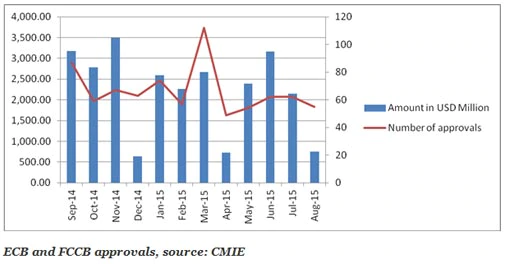How to Read a Nonprofit Financial Statement Nonprofit Management
Contents:


This too is split into restricted and unrestricted funds so your organization can see your net unrestricted assets, restricted assets, and total assets. The statement you’ll use to review and categorize your revenue and expenses will be your nonprofit statement of activities. Whatever you choose to do, be sure it helps maximize your organization’s activities and keeps you on track. Failing to accurately track your revenue and expenses can lead to unexplained expenses and waste, which you never want to report back to your supporters.

In order to rent office space, the nonprofit business must pay for rent and utilities. Looking at the area, the organization sees how the total square footage of the office space compares to the number of offices occupied by specific departments. For example, depending on how much of the office space is used by the fundraising department, the organization can see how much of its rent expenses should be allocated toward the fundraising department. With your nonprofit’s statement of cash flow, you can also draw additional conclusions, determining your organization’s free cash flow or your cash flow to debt . For example, when comparing the major financial statements of a for-profit to a non-profit organization, you’ll notice that even though both are reports of financial value, they differ in title and motivation.
The Importance of Nonprofit Financial Statements Knowledge for Nonprofit Board Members
Because the money that comes from nonprofit businesses is the result of grants, fundraisers, donations, and campaigns, not-for-profit organizations must report their expenses differently than a for-profit business would. These statements are relatively consistent across different types of nonprofit organizations, although some nonprofits may be required to produce additional reports, statements, or disclosures. Your nonprofit statement of activities is split into several different sections. Meanwhile, horizontally, it’s split into your organization’s unrestricted and restricted revenue. The cherry on top is that this report can help your organization file your annual Form 990 report. You’ll need to record information about your organization’s expenses and revenue in your Form 990.
AAMC Statement on Court Opinion Undermining FDA Regulatory … – AAMC
AAMC Statement on Court Opinion Undermining FDA Regulatory ….
Posted: Wed, 12 Apr 2023 13:05:43 GMT [source]
While you’re not bringing as much money in, your organization still needs to keep up with your monthly expenses! After all, you never want to miss a bill payment or have to delay a paycheck to your staff members . When your nonprofit compiles your annual/impact report at the end of the year, you include some information about your fundraising revenue and other financial information. This transparency helps build stronger relationships with your donors who want to be sure you’re using their contributions in an ethical and effective way.
Follow my Blog via Email
The SOA report shows a nonprofit organization’s income, expenses, and net income for a specific period of time, all or part of a fiscal year. The report reflects the changes to an organization’s net assets resulting from financial activities that occurred during the fiscal year. The statement of activities is one of the prescribed financial statements. It is the statement an NFP issues in place of a business entity’s income statement.
- This section is further divided by the restrictions of your organization’s assets.
- When you first think of financial statements, your mind might jump to the standard balance sheets, income statements, and cash flow statements typically used by for-profit organizations.
- This Statement establishes standards for general-purpose external financial statements provided by a not-for-profit organization.
- First, restrictions are imposed by the donor when they make the gift or grant.
Under the unrestricted column, an account called “Revenues Released” shows additional income equal to the revenues earned or released under the restricted grants. There is an offsetting negative amount in the restricted column netting this account to zero overall. This “additional” revenue in the unrestricted column helps to show what is the true “operational” income or loss as it matches the revenue earned to the corresponding expenses incurred. Most organizations try to achieve operational income unless the budget was created with a planned loss. For obvious reasons, executives and board members of non-profit organizations prefer to see that revenues exceed expenses. This difference would normally be described as net income, but for non-profits, it’s referred to as the change in net assets.
Functional Classifications Versus Natural Classifications
This method of expense reporting is most commonly used by nonprofit organizations. The totals of the two net asset classifications must be presented inthe statement of financial position, and the amount of the change in the two classes must be displayed in the statement of activities . Nonprofits will continue to provide information about the nature and amounts of donor restrictions.
In the example above, you will see that the amount of temporarily restricted revenue collected during the reporting period was less than the expenses incurred using temporarily restricted funding . Thus, there is a drop in the ending balance of the temporarily restricted net assets. Individuals used to reading for-profit financial statements typically consider this a “loss”; however, nonprofits are not in the business of making a profit , thus this is an incorrect assumption.
The purpose of the statement of activities is to provide users with relevant information about the changes in the net assets of the NFP and how the NFP is using its resources in its programs and services. Reviews the major financial accounting statements that are used by nonprofit organizations. Provides an understanding of the types of financial statements that are used by nonprofit organizations, and how they differ from for-profit financial reporting.

When your nonprofit has a concrete understanding of how you’re using your financial resources, you can communicate that information back to your supporters and increase their trust in your organization. While these three core accounting reports will be used internally, they can help you provide material for your annual/impact report and help your nonprofit reach new heights. Fundraising is the other major bucket on the nonprofit statement of activities.
If you haven’t seen one for your organization yet, or want to try your hand at compiling one, use the following template to get started. Nonprofits receive revenue from a number of different sources, all of which are essential to helping the organization pursue its mission. The majority of this revenue will be recorded as gross in your statement of activities. For-profit accounting departments have a standard set of reports and statements they run to analyze their finances. Nonprofits have essentially parallel reports, but because their accounting is different, the reports differ slightly as well. Expenses in a matrix, which includes both the natural and functional expenses by program, according to FASB Statement 117.
Recognize best practices that apply when preparing a straight line depreciation organization’s statement of cash flows. Recognize best practices for addressing the cash flows from a nonprofit organization’s operating, investing, and financing activities. The Statement Of Activities is similar to the Income Statement businesses issue. The Statement of Activities looks at the entire organization and reports on the revenues and expenses of the nonprofit during a specific reporting period.
The change in net assets must be the same as the difference between the beginning and ending balance of net assets as reported in the statement of financial position. Improved financial management can help your nonprofit organization better allocate its resources and improve its overall performance. Improved financial management can help your nonprofit organization better plan for the future, and track its progress over time.
D&O Insurance: Do Nonprofit Need It – Explained
It is important for a nonprofit to easily generate this statement to measure if each of their mission based programs has the resources necessary to operate efficiently and can be sustainable for the organization. Disregarding the importance of a budget or neglecting to regularly review financial statements is one of the most common mistakes made by nonprofit organizations. When a budget is compiled, it lays out the annual plan for the organization in terms of the money spent, but also the money received. Regular review of the budget and actual financial reports can give leadership the insight they need to make changes when necessary before finances have gone too far off course. Nonprofit organizations share their financial health with board members, donors, government agencies, and other users. A variety of financial reports and statements are used to report that position.
- It’s an eight-question online form designed for the smallest organizations that receive less than $50,000 in gross receipts on an annual basis.
- We recommend getting in touch with an accountant to help with these activities.
- Lesson 1 takes and in-depth look at the statement of cash flows for a nonprofit organization.
- Understanding your finances and resources is extremely important to a nonprofit, because it provides insight as to whether or not you have the required resources to fulfill your mission.
- The report can be used to improve fund-raising efforts by highlighting the different ways in which donations can be used to support your mission.
The owners and authors of Nonprofit Information accept no liability for the views expressed in an article on the site. You are advised to take detailed legal advice about your specific situation. Hearst Newspapers participates in various affiliate marketing programs, which means we may get paid commissions on editorially chosen products purchased through our links to retailer sites. As you can see, the column headings highlighted in green show the expenses by function. I am the author of The Little Book of Local Government Fraud Prevention, Preparation of Financial Statements & Compilation Engagements, The Why and How of Auditing, and Audit Risk Assessment Made Easy. I think the AICPA was mainly trying to get rid of the permanently restricted category.
Cash flows from financing activities include line items such as income generated by issuing bonds and payments made towards debt. Cash flows from financing activities could also include cash received to support a capital campaign. If the net income is positive, that means the organization is making more money than it’s spending. It means the organization is doing well and is able to continue its operations. A donor could give a single donor that is to equally be split across 3 years. We consider that there is a time restriction on the funds allowing only 1/3 of the donation to become unrestricted in a given year.
All of a nonprofit’s funds should be reinvested into the organization and its mission. A nonprofit financial statement is a written record showing its financial activities and position over a specified period. The four basic financial statements can be extremely useful to non-profit organizations. Getting in the habit of producing them on a periodic basis can provide insights into your organization that otherwise would not be known.
As nonprofit accountants, it’s vital to know the ways to report expenses to the IRS for your nonprofit clients, and one of the most important parts of that is understanding the role of a statement of functional expenses. Part of building trust with the community, donors, board of governors, and other stakeholders is to be transparent in how the nonprofit organization’s expenses drive support for its missions and programs. Nonprofit financial management is unique from for-profit organizations because it focuses on maintaining accountability to both donors and constituents rather than earning a profit. That’s why nonprofits leverage fund accounting to maintain their finances. Imagine a nonprofit earns $10,000 per month in grants to fund one of its programs. While this might seem like a small difference (just $1,000), your organization will slowly deplete its bank account if you continue spending that amount without earning additional revenue.
Simply put, a non-https://1investing.in/‘s revenue is the amount of cash it generates, and its income is the amount of cash it generates minus its expenses and losses. Revenues and incomes are recorded in a non-profit’s Statement of Financial Position and Statement of Activities, which together detail the organization’s financial health. These funds are free from any external restrictions and available for general use. These types of contributions used to be known as unrestricted funds, and are often called general operating or general support.

This guide teaches the basics of reading and understanding a nonprofit Statement of Activities. But, since auditable nonprofit financial statements, we’ll talk about accrual accounting practices in this article. That means your revenue will also include any donations pledged in the period and any receivables . The equity section of a nonprofit financial statement will include net assets with and without restrictions.

Dejar un comentario
¿Quieres unirte a la conversación?Siéntete libre de contribuir!